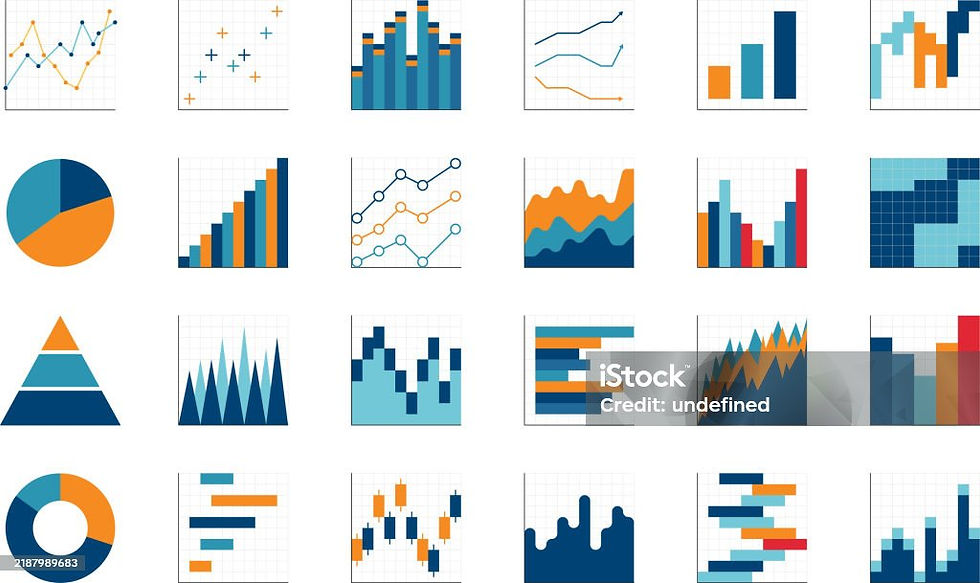Power BI vs Tableau: A Comprehensive Comparison for Data Analytics
- hemabalaji27
- Jan 16
- 4 min read
1. Overview
Tableau:
Tableau is one of the most powerful data visualization tools available and is known for its advanced analytics capabilities and interactive dashboards. It's designed to handle complex data and provides extensive flexibility in creating sophisticated visualizations. It is ideal for businesses with advanced data visualization needs, complex data scenarios, or large data sets.
Power BI:
Power BI, developed by Microsoft, is a robust BI tool that integrates seamlessly with other Microsoft products, like Excel, Azure, and SharePoint. It is designed to be more affordable and user-friendly than Tableau, making it a great choice for businesses that prioritize ease of use and affordability. It is ideal for businesses that use Microsoft tools and need an affordable BI solution that is easy to use and scalable.
2. Ease of Use
Tableau:
Tableau is known for its flexibility and customization options, which means it provides more powerful features for advanced users but can come with a steeper learning curve for beginners.
Strengths: Powerful in visualizing complex datasets, with drag-and-drop features for creating dynamic charts and dashboards.
Challenges: Learning curve can be steep for non-technical users, especially when working with large datasets or advanced visualizations.
Power BI:
Power BI is often praised for its ease of use, especially for those familiar with Microsoft Excel and other Microsoft Office tools. Power BI uses a familiar interface, making it quicker for many users to learn.
Strengths: User-friendly interface with intuitive drag-and-drop functionality, making it easy for non-technical users to get started quickly.
Challenges: While easy to start with, Power BI may lack some of Tableau’s depth in advanced data modeling and customization.
3. Data Connectivity and Integration
Tableau:
Tableau offers a wide range of data connectors and integrates well with databases, cloud services, and third-party tools. It works well with various big data and cloud systems (Hadoop, Snowflake, etc.) and has native connectors for multiple platforms. Advanced features like Tableau Prep allow for powerful data wrangling and preparation, which is useful for complex datasets.
Power BI:
Power BI integrates very well with Microsoft products and is part of the Microsoft ecosystem. It also supports many third-party data sources and cloud services but has a special edge when it comes to integrating with Azure, SharePoint, and Excel. It seamlessly integrates with other Microsoft products, such as Microsoft Teams, OneDrive, and Excel.
4. Data Visualization
Tableau:
Tableau is widely considered the leader in terms of data visualization. It offers advanced and flexible visualization options, allowing users to create highly customized and interactive visualizations.
Strengths: Wide variety of visualizations, including heatmaps, scatter plots, waterfall charts, geographical maps, and more.
Customization: High degree of customization in terms of design, color schemes, interactivity, and layout.
Flexibility: Tableau’s visualizations are dynamic and allow users to drill down into data and interact with charts in ways that other tools may not support.
Power BI:
Power BI’s visualizations are strong, but they tend to be simpler and less customizable than Tableau’s. However, for many businesses, Power BI's visualizations are adequate and do the job well.
Strengths: Offers a wide variety of basic and intermediate visualizations (bar charts, line charts, pie charts, etc.).
Customization: While not as advanced as Tableau, Power BI does offer good customization options and can be enhanced through custom visuals available from the Microsoft marketplace.
Integration with Excel: The integration with Excel makes it easy to import and visualize data directly from spreadsheets, which is great for teams that heavily rely on Excel-based reports.
5. Performance and Scalability
Tableau:
Tableau is optimized for handling large datasets and complex queries. It is generally considered more suitable for organizations with advanced data needs and large-scale reporting.
Scalability: Tableau can scale well for larger organizations with bigger datasets and can handle millions of rows of data efficiently.
Performance: Performs well with high volume data, especially when using Tableau Server or Tableau Online.
Power BI:
Power BI is also highly scalable, especially when combined with the Premium version, but it may struggle with extremely large datasets or overly complex data models compared to Tableau.
Scalability: Power BI can scale well, but larger organizations might require Power BI Premium for best performance. It may struggle with very complex datasets, especially without proper data model optimization.
Performance: Handles moderately large datasets well, especially when optimized through data models and Power Query.
6. Collaboration and Sharing
Tableau:
Tableau offers several options for sharing dashboards and reports, including Tableau Server and Tableau Online. Collaboration features are robust, especially for teams working with complex data.
Sharing: Dashboards can be shared securely via Tableau Server or Tableau Public for public sharing.
Collaboration: Tableau allows for collaborative editing, annotation, and interactive dashboard sharing with stakeholders.
Power BI:
Power BI provides great collaboration tools, especially when used within the Microsoft ecosystem. It allows for seamless sharing via Power BI Service and integrates with Microsoft Teams and SharePoint.
Sharing: Dashboards and reports can be shared with specific users via Power BI Service, and the integration with Microsoft Teams allows for easy collaboration.
Collaboration: Teams can comment on reports, collaborate in real-time, and track metrics over time.
The choice between Tableau and Power BI depends largely on the organization’s needs and existing infrastructure:
Tableau is ideal for organizations that need advanced data visualization, handle large datasets, and require flexibility and customization. It’s best suited for more technical users or teams with complex data analytics needs.
Power BI is a better choice for organizations already within the Microsoft ecosystem and those seeking a cost-effective, easy-to-use solution with seamless integration across Microsoft products. It’s a great tool for business users and companies that prioritize affordability and user-friendliness without needing complex visualizations.


